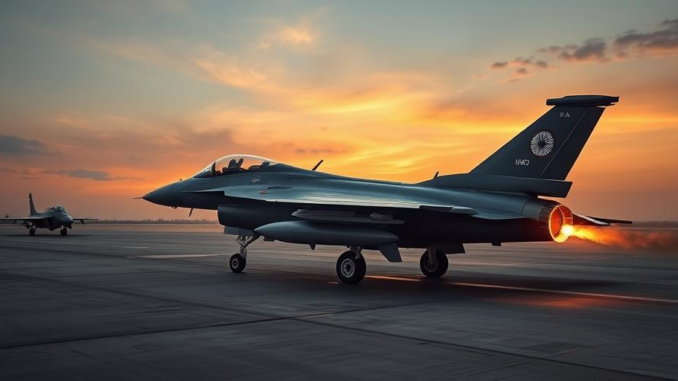
Summary
India strengthens its naval air power with a ₹63,000 crore deal for 26 Rafale-M fighter jets. The deal modernizes India’s carrier fleet and solidifies its strategic partnership with France. This purchase marks a significant investment in India’s defense capabilities.
TrueNAS: The perfect fit for businesses of any size, from SMBs to global enterprises.
** Main Story**
So, India’s just finalized this massive deal with France to snag 26 Rafale-M fighter jets. This isn’t just pocket change; it’s a ₹63,000 crore (about $7.2 billion USD) agreement. It’s a real commitment to beefing up their naval air power, you know? This will give the Indian Navy some serious carrier-based combat capabilities and marks a pretty significant leap forward. You’re looking at 22 single-seat and four twin-seat trainer aircraft, plus a hefty support package that covers everything from weapons and simulators to crew training and even five years of logistical support. The Rafale-M jets themselves? They’re known for their cutting-edge avionics, weapon systems, and overall versatility and will be operating from INS Vikrant and INS Vikramaditya, not to mention the deal includes upgrades and spares for the 36 Rafales already rocking it with the Indian Air Force.
Why This Matters for Naval Aviation
This purchase is a game-changer, really upgrading the Indian Navy from its aging MiG-29K fleet to, well, one of the most impressive carrier-borne fighters out there. The Rafale-M is built for the tough conditions of carrier operations. Think reinforced landing gear, arrestor hooks, and a super sturdy airframe. These are absolutely key for Short Take-Off But Arrested Recovery (STOBAR) operations, which is the standard way India’s aircraft carriers launch and recover planes. Deliveries? Expect them to start in about four years, with the first planes arriving by late 2029, if all goes well. The whole fleet should be in action by 2031. That timeline gives them some breathing room for a smooth transition, making sure the Indian Navy stays combat-ready.
The Bigger Picture: Strategic Significance
This deal has some serious strategic implications for India. It’s going to significantly boost their presence in the Indian Ocean region. The Rafale-M’s long range and serious weapons payload mean India can project power more effectively, which is crucial for responding to any security threats in the area. It also solidifies the strategic partnership between India and France, underlining how their defense cooperation is growing stronger. Remember when India signed a similar deal with France for the first 36 Rafale jets? Some critics said it was too costly at the time, but look at where they are now. In a far stronger position to defend themselves.
Cost vs. Capabilities
Now, the Rafale-M deal has definitely sparked some chatter about the price tag. We’re looking at roughly $277 million per jet. And, yeah, that’s a lot of money, however, this includes weapons, training, and ten years of support, so it’s a substantial investment. That said, this cost is actually on par with similar deals other countries have made. The investment is justified, considering the Rafale-M’s top-notch performance and versatility. It’s going to be a critical part of their naval air power for decades to come. Compared to the earlier Rafale deal for the Indian Air Force, this procurement benefits from economies of scale and more refined negotiations. In the end, it’s a cost-effective way to modernize the Indian Navy’s fighter fleet.
Saying Goodbye to the MiG-29K
As the Rafale-M jets arrive, the existing MiG-29K fleet will gradually be phased out. The MiG-29Ks have done their job, but the Rafale-M is a major upgrade in terms of capability and technology. Its more advanced radar, electronic warfare systems, and larger payload capacity will seriously enhance the Indian Navy’s combat capabilities, and that, well, that’s a good thing.
The Path to Making it in India
Look, while this Rafale-M deal takes care of the Indian Navy’s immediate need for a modern carrier-borne fighter, India’s also investing in developing its own defense industry. The Twin Engine Deck Based Fighter (TEDBF) is in the works and could eventually complement, maybe even replace, the Rafale-M. This two-pronged approach? It means the Indian Navy gets cutting-edge tech now, while India builds up its domestic defense industrial base for the future, and who can argue with that? Ultimately, this deal isn’t just about buying planes. It’s about securing India’s maritime future.


$7.2 billion! That’s a lot of rupees. I wonder how many samosas you could buy with that? Enough to supply the entire Indian Navy for, say, a century? Impressive move for naval air power, though!
That’s an interesting calculation! I hadn’t considered the samosa supply implications. It’s great to see the excitement around bolstering naval air power! Thinking about it, this deal will significantly enhance India’s maritime capabilities in the Indian Ocean region, ensuring stability and security for years to come.
Editor: StorageTech.News
Thank you to our Sponsor Esdebe
$277 million *per jet*? Is that the sticker price, or does it include the optional extra cup holder and air freshener? Asking for a friend who’s thinking of starting a *very* ambitious lemonade stand.